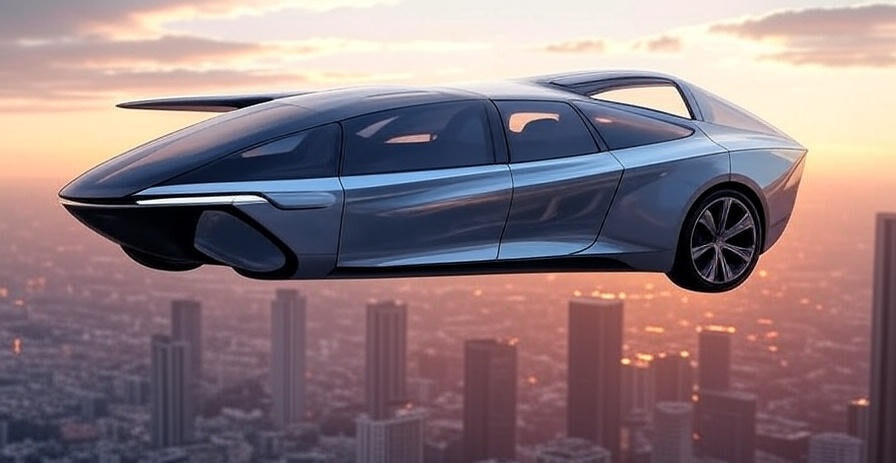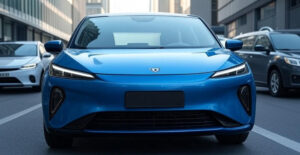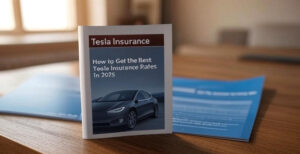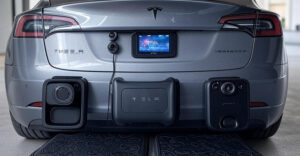Summary: Buckle Up — The Sky’s About to Get Crowded
Remember when flying cars were just cartoon daydreams? Meet George Jetson, right? Well, guess what — in 2025, that dream’s peeking into reality. We’re talkin’ drones big enough to haul your morning coffee run, electric vertical take-off and landing (eVTOL) air taxis, and big names like Hyundai, Joby Aviation, and even Tesla rumored to be cookin’ up flying machines.
But are these sky commuters real or just billionaire playgrounds? How close are they, really? And when can you ditch traffic jams for clear blue highways? This deep dive’ll break down the latest innovations, real-world examples, the headaches that still hold ‘em back, and what the next decade might look like. So strap in — we’re gonna cruise above the clouds (in theory).
The Flying Car Dream: How Did We Get Here?
Flying cars ain’t new. From 1950s concept sketches to the sci-fi movies of the ‘80s, people been imaginin’ personal air travel forever. But back then, the tech was, well, trash. Engines were too heavy. Flight control was sketchy. And you didn’t want Bob from down the street, who can’t even park straight, tryin’ to land on your roof.
Fast forward to today — battery tech, drones, and autonomous flight software changed the game. Now, we’ve got the bones to make air taxis safer than the local pizza delivery bike.
What Counts as a “Flying Car” Anyway?
Good question. In 2025, the term covers a few types:
✅ eVTOLs (electric vertical take-off and landing): Think giant drones you can ride in. These lift off straight up, no runway needed. Perfect for cities.
✅ Hybrid flying cars: Some startups work on cars with foldable wings that drive on roads and fly from small airstrips.
✅ Hover bikes & personal air vehicles: One-seater craft, kinda like sci-fi motorcycles for the sky.
Biggest focus? eVTOLs — they’re the poster kids for urban air mobility (UAM).
Who’s Leading the Race?
Plenty of big players are throwin’ money in the clouds:
✈️ Joby Aviation
Backed by Toyota. Their eVTOL prototype has a 150-mile range and speeds up to 200 mph. Already FAA certification in progress.
🚁 Archer Aviation
Another US-based firm. Promises air taxis by 2026 for short hops around major cities.
🚙 Hyundai Supernal
Hyundai’s division plans to roll out their air taxi service by 2028.
🚕 Volocopter
German brand testin’ two-seater air taxis for short urban hops. They even flew one around Singapore’s Marina Bay.
Where’s Tesla in All This?
Elon’s teased “Tesla Air” for years but no official craft yet. Rumors say they’re experimentin’ with batteries light enough for vertical flight. But who knows — maybe by 2030 you’ll have an autopilot that flies over traffic jams.
How Close Are We Really?
It’s gettin’ real, but don’t sell your Camry yet. Why?
✅ Prototypes Work: These machines fly. That’s not the problem.
✅ Certifications Take Years: Regulators wanna make sure people aren’t crashin’ onto malls. FAA, EASA, and other aviation bodies are testin’ safety, pilot requirements, and air traffic rules.
✅ Infrastructure Needs Building: You’ll need “vertiports” (sky garages), charging pads, air corridors, noise laws, and ways to keep all these hovercraft from bumpin’ into each other.
✅ Public Trust: It’s one thing to fly a test drone — another to get Grandma to hop in.
Experts say short demo flights for paying customers might pop up by 2026–2028, but mass adoption? More like the 2030s.

The Cost Factor: Who Can Afford It?
Early on, these rides won’t be cheap. Think luxury air taxi for business commuters — a few hundred bucks for a 15-min hop that’d take an hour by car. But like smartphones, prices drop when tech scales up.
Uber’s old estimates guessed a 50-mile air taxi ride could be under $100 one day. Maybe by 2040, you’ll get your own “family flying SUV.”
Safety & Traffic: Will the Skies Be Chaos?
Air traffic control for thousands of sky taxis sounds nuts, right? That’s why companies are workin’ on autonomous systems. The goal is to have smart software steer clear of buildings, birds, and each other — way safer than Bob on his phone merging lanes.
What About Batteries?
Biggest tech hurdle? Battery energy density. Flight needs more power than rolling on roads. Luckily, next-gen solid-state batteries could give 2x the energy in half the weight. Some startups are even tinkerin’ with hydrogen fuel cells for longer hops.
Real-World Sneak Peek: Tokyo’s Flying Taxi Olympics
In 2025, Tokyo plans to showcase eVTOL air taxis during the Osaka Expo. If all goes well, it’ll prove that short city hops are possible — and maybe more folks’ll trust sky rides after seein’ ‘em fly over the sushi joints.
5 Things That’ll Make or Break Flying Cars
✅ Battery breakthroughs — More range, less weight.
✅ Regulations — Safety, noise limits, traffic control.
✅ Public trust — People need to feel safe.
✅ Vertiports — Where you land, charge, and take off.
✅ Costs dropping — It’s gotta get cheaper than helicopters.
Q&A: Flying Cars in Plain English
1️⃣ When can I buy a flying car?
Probably not before 2035 unless you’re super rich. Air taxis might come sooner.
2️⃣ Will I need a pilot’s license?
For now, yeah. Eventually, they’ll be mostly autonomous with trained operators.
3️⃣ How far can they fly?
Most eVTOLs aim for 30–150 miles per trip.
4️⃣ What if the battery dies mid-air?
They’ve got backup rotors, parachutes, and auto-landing features. Still scary, huh?
5️⃣ Are they noisy?
Quieter than helicopters — but not silent. Noise regs are a huge deal.
6️⃣ How much will a ride cost?
Early on, maybe $100–$300 per hop. Mass adoption will bring it down.
7️⃣ Will cities look different?
Yup — think rooftop vertiports, charging hubs, and new air lanes.
8️⃣ Who’s the biggest player now?
Joby Aviation’s up front in the US. Volocopter leads in Europe.
9️⃣ What’s the biggest roadblock?
Regulations. Building safe traffic control for airspace ain’t easy.
🔟 Will flying cars replace cars on roads?
Nope. They’ll complement ‘em for short city hops.
1️⃣1️⃣ Is it good for the environment?
Better than gas helicopters but still energy-hungry. Renewable charging helps.
1️⃣2️⃣ Will I see one in my city soon?
Maybe demos by 2028. Full-on air taxi rides? 2030s for sure.
Final Take: Dream Big, but Keep Your Seatbelt On
Flying cars are closer than ever — but not exactly next year’s driveway upgrade. Tech’s there, but the real grind’s building trust, rules, and sky highways that keep folks safe. Keep your eyes up, though — the day you can skip traffic by flyin’ over it is gettin’ closer every year.
Also Read on Namaste News
✅ “How Long Do EV Batteries Really Last? 2025 Update” — Read More
✅ “Best Budget Electric Cars in 2025: Save Money, Go Green” — Check It Out









